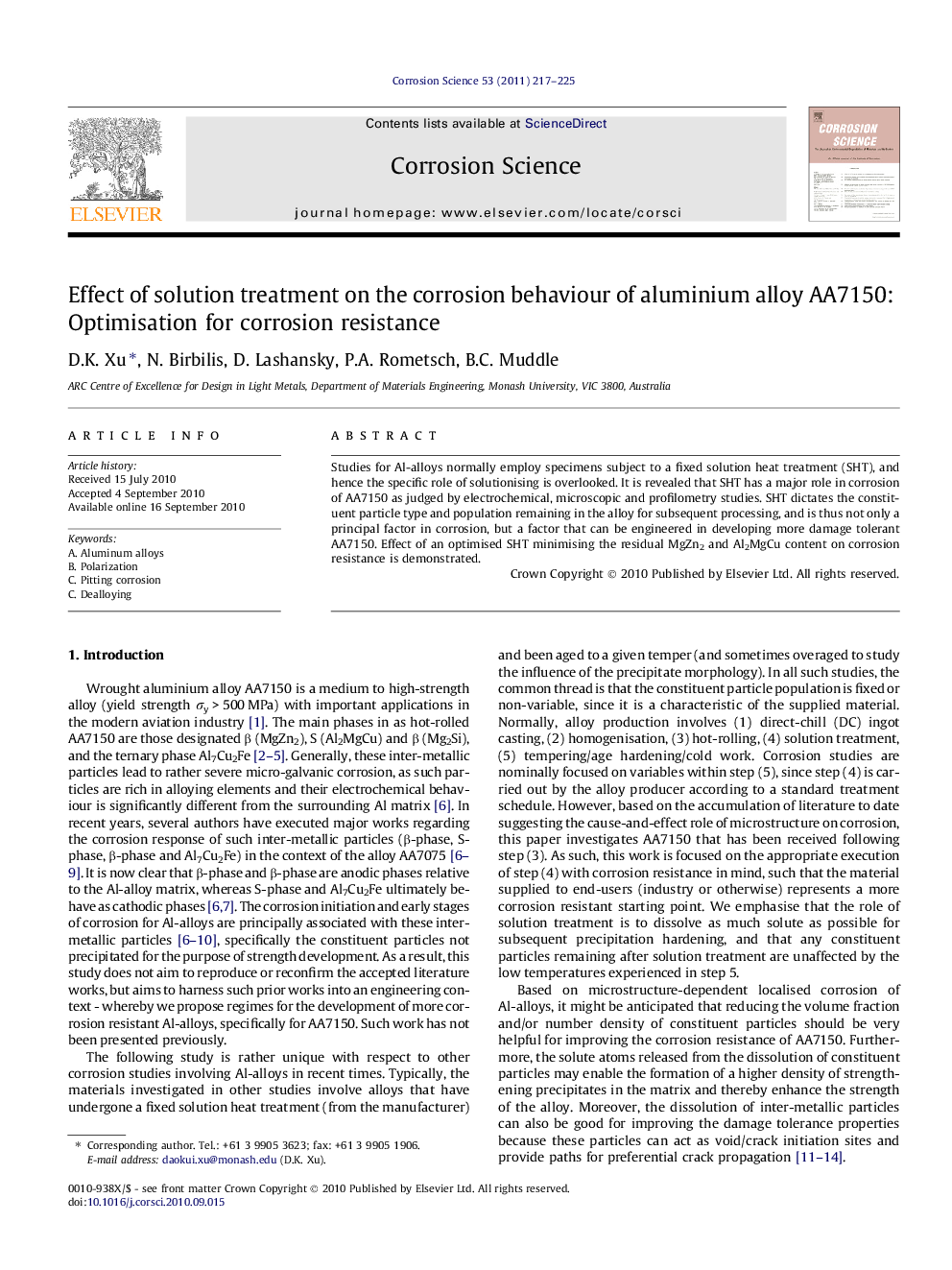| Article ID | Journal | Published Year | Pages | File Type |
|---|---|---|---|---|
| 1469829 | Corrosion Science | 2011 | 9 Pages |
Studies for Al-alloys normally employ specimens subject to a fixed solution heat treatment (SHT), and hence the specific role of solutionising is overlooked. It is revealed that SHT has a major role in corrosion of AA7150 as judged by electrochemical, microscopic and profilometry studies. SHT dictates the constituent particle type and population remaining in the alloy for subsequent processing, and is thus not only a principal factor in corrosion, but a factor that can be engineered in developing more damage tolerant AA7150. Effect of an optimised SHT minimising the residual MgZn2 and Al2MgCu content on corrosion resistance is demonstrated.
Research highlights► It was revealed that the corrosion rate of AA7150 specimens varies markedly with the nature of solution treatment, which must be recognised given that corrosion studies to date do not isolate the effect of solution treatment. ► This work has contributed towards some general rules for the corrosion potency of particles, revealing that η-, β- and S-phase particles, led to significant corrosion rates when they were present in constituent form. ► Strong correlations exist between the microstructure, corrosion rate, and corrosion morphology of specimens studied. Quantitative microscopy has revealed the predominant intermetallic particles that exist in AA7150 on the basis of type and volume fraction. This is important, as this alloy is the staple of the aircraft industry. ► We show that appropriate solution treatment can be used in the context of developing more corrosion resistant Al-alloys.
